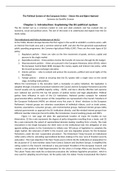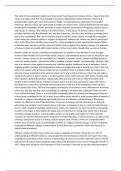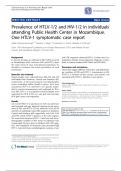Samenvatting
The Political System of the European Union - Summary
- Instelling
- Vrije Universiteit Amsterdam (VU)
A summary of the book 'The Political System of the European Union' by Simon Hix and Bjorn Hoyland. This book is part of the exam literature for the course EU Governance in International Context, given to Political Science students at the VU University in Amsterdam. Does not include chapters 7, 11 a...
[Meer zien]









